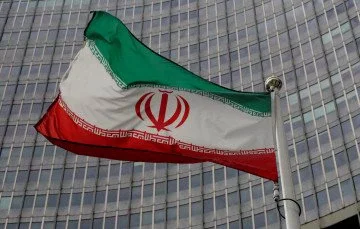
A missile fired in an alleged Israeli strike on air defenses near Iran’s Natanz nuclear site had technology that enabled the weapon to evade the country’s radar defense systems, according to two Western officials who spoke to The New York Times. The officials also revealed that the warplane from which the missile was launched was “far from Israeli or Iranian airspace” and did not enter Jordanian airspace, in a calculated move to keep Amman out of any potential ramifications following last weekend’s drone and missile attacks on Israel.
US media reports suggest that the alleged Israeli strike, which took place overnight Thursday-Friday, went beyond the scope of the small drones described by Tehran. The strike reportedly included at least one missile launched by Israeli Air Force warplanes, targeting an air defense radar site near Isfahan that was part of an array defending the nearby top-secret Natanz nuclear site. Satellite imagery shows damage to the radar of an S-300 system at the Eighth Shekari Air Base in Isfahan, according to The New York Times.
The attack was deliberately designed to send a message of how a wider assault could look, with the Western officials stating that “Israel’s use of drones launched from inside Iran and a missile that it could not detect, was intended to give Iran a taste of what a larger-scale attack might look like.” The strike was calibrated to make Iran think twice before launching a direct attack on Israel in the future, they added.
US officials have confirmed to CBS News that an Israeli missile did hit Iran, while Iran maintains that the incident involved small drones. BBC Verify has attempted to identify the weapon by analyzing images of wreckage posted from an area in neighboring Iraq, 60km (45 miles) south-west of Baghdad. Experts have reached a consensus that a two-stage missile was likely used and was probably air-launched, with many identifying the debris with Israeli-produced Blue Sparrow missiles.
Justin Crump, a former British Army officer who runs risk intelligence company Sibylline, agreed that the debris seen in the pictures was probably from a missile booster, with the warhead having detached and presumably achieving its mission. “Israel has previously used such weapons in Syria, so this is well within their capabilities,” Crump added.
Iranian officials and media have confirmed that an attempted strike occurred but have downplayed its significance, with no reports of casualties. Hossein Dalirian, a spokesman for Iran’s National Centre of Cyberspace, said that Israel had “only made a failed and humiliating attempt to fly quadcopters [drones]” which had been shot down. The International Atomic Energy Agency has confirmed that there was no damage to Iran’s nuclear sites.
The latest strike comes less than a week after Iran launched hundreds of missiles and drones at Israel, an incident seen as a dramatic escalation in tensions. Despite the vast scale and unprecedented nature of Iran’s attack, it was largely unsuccessful, with the majority of projectiles shot down by Israeli air defenses with the help of the US, UK, and other allies.
The full significance of this latest strike is still becoming clear, and it is not yet known whether Iran will seek to respond. BBC security correspondent Frank Gardener describes the scale of Friday’s attack as limited and potentially designed to ensure the conflict goes no further. However, Israeli Prime Minister Benjamin Netanyahu will likely come under competing pressures from some of his own generals and political allies to push back against Iran, according to BBC international editor Jeremy Bowen.
This flare-up in hostilities comes against the backdrop of the war in Gaza, where the Israeli military is fighting Iran-backed Hamas. The international community, including the US and other Western allies, has urged Israel to avoid any action that risks turning the long-running proxy war between the two Middle East rivals into a direct conflict.
As tensions continue to simmer in the region, the world economy has reacted with concerns that a worsening conflict in the Middle East could disrupt oil supplies. Brent crude, the international benchmark for oil prices, rose by 1.8% to $88 a barrel after the attack, while the price of gold briefly came close to a record high before falling back to nearly $2,400 an ounce.







